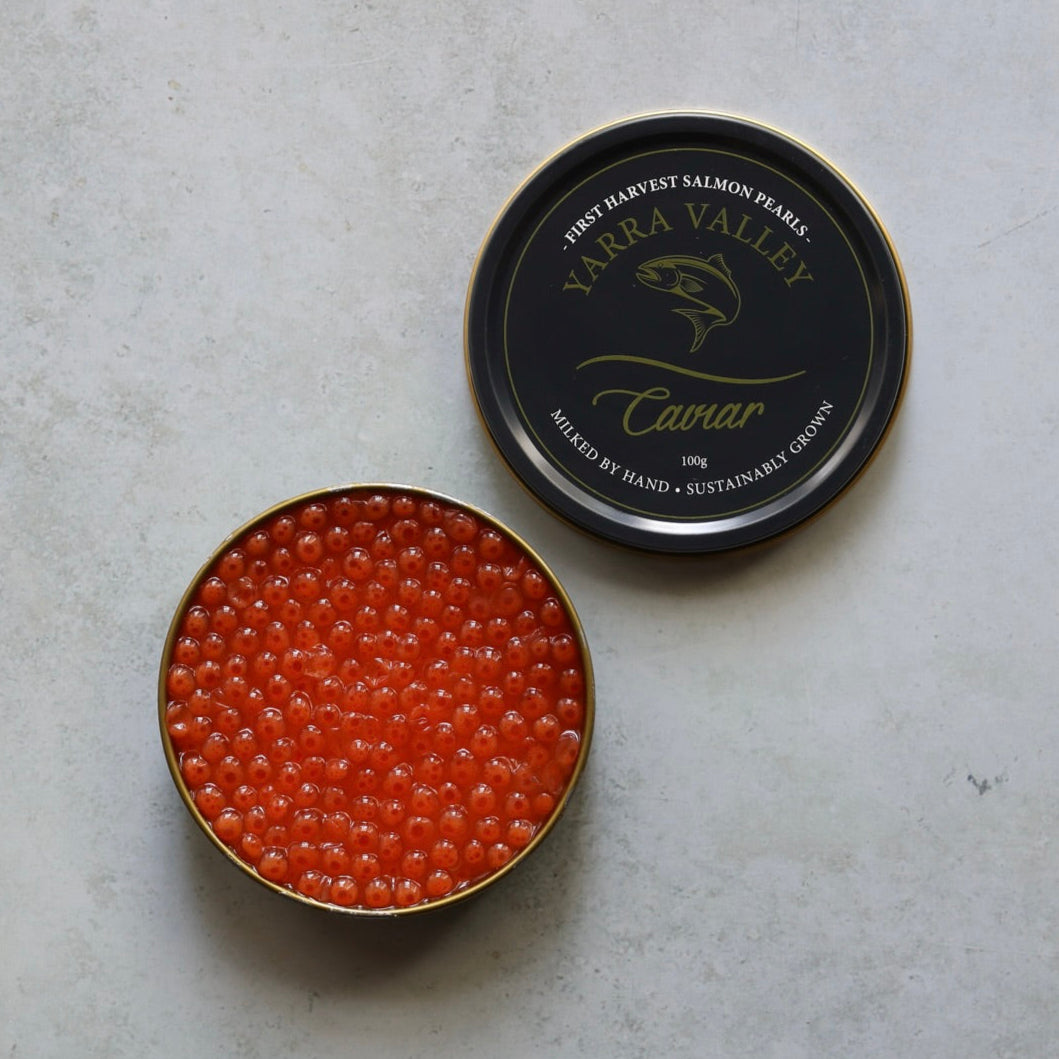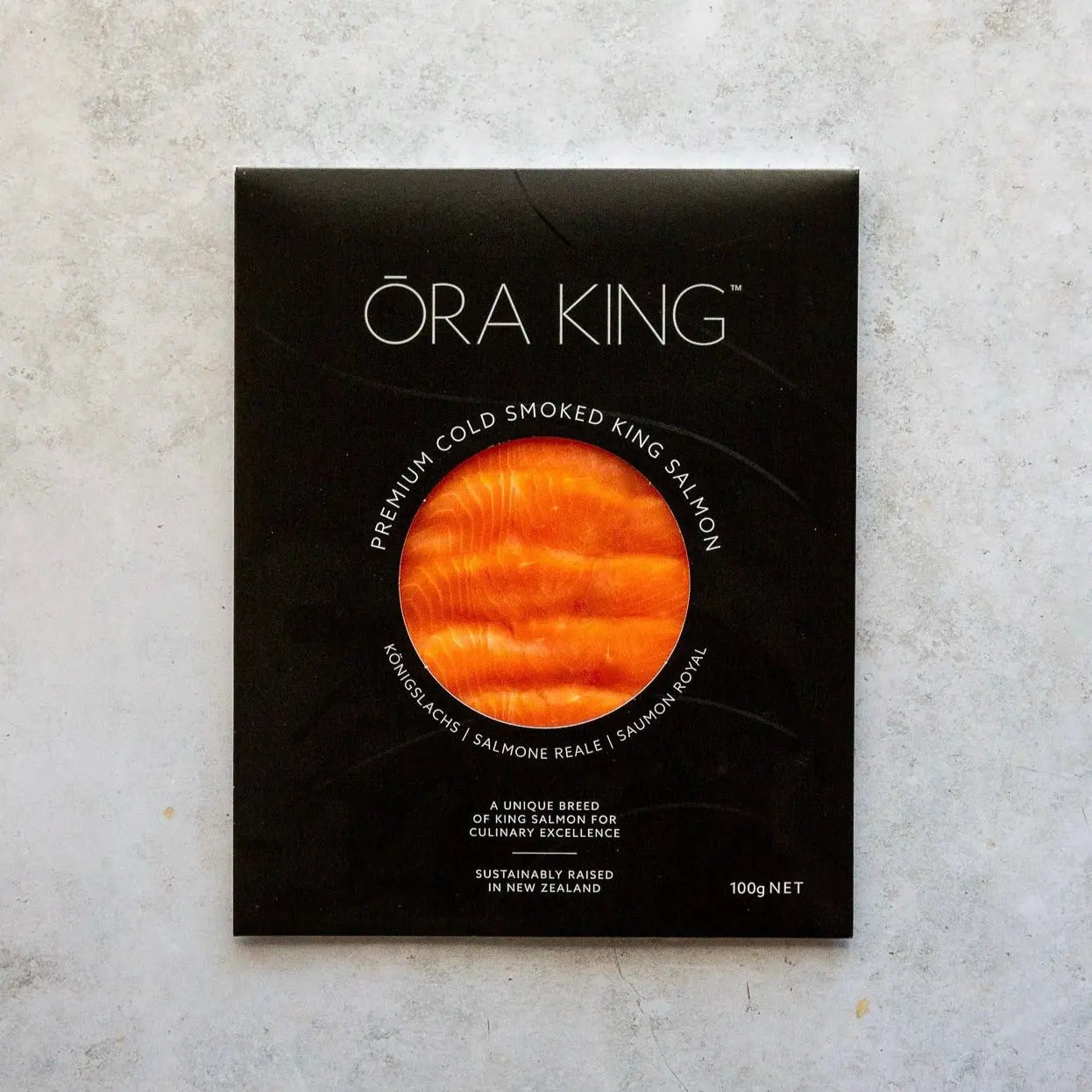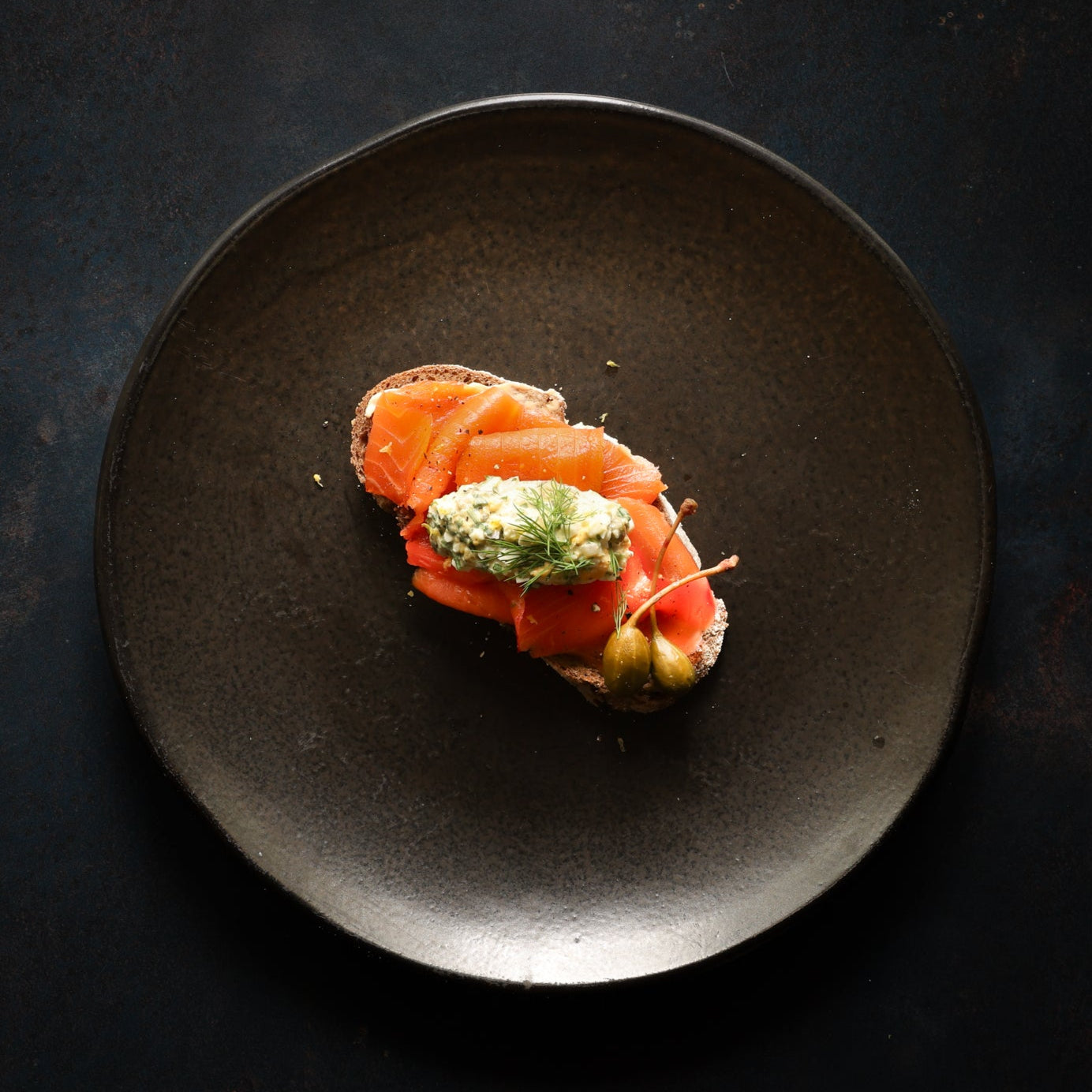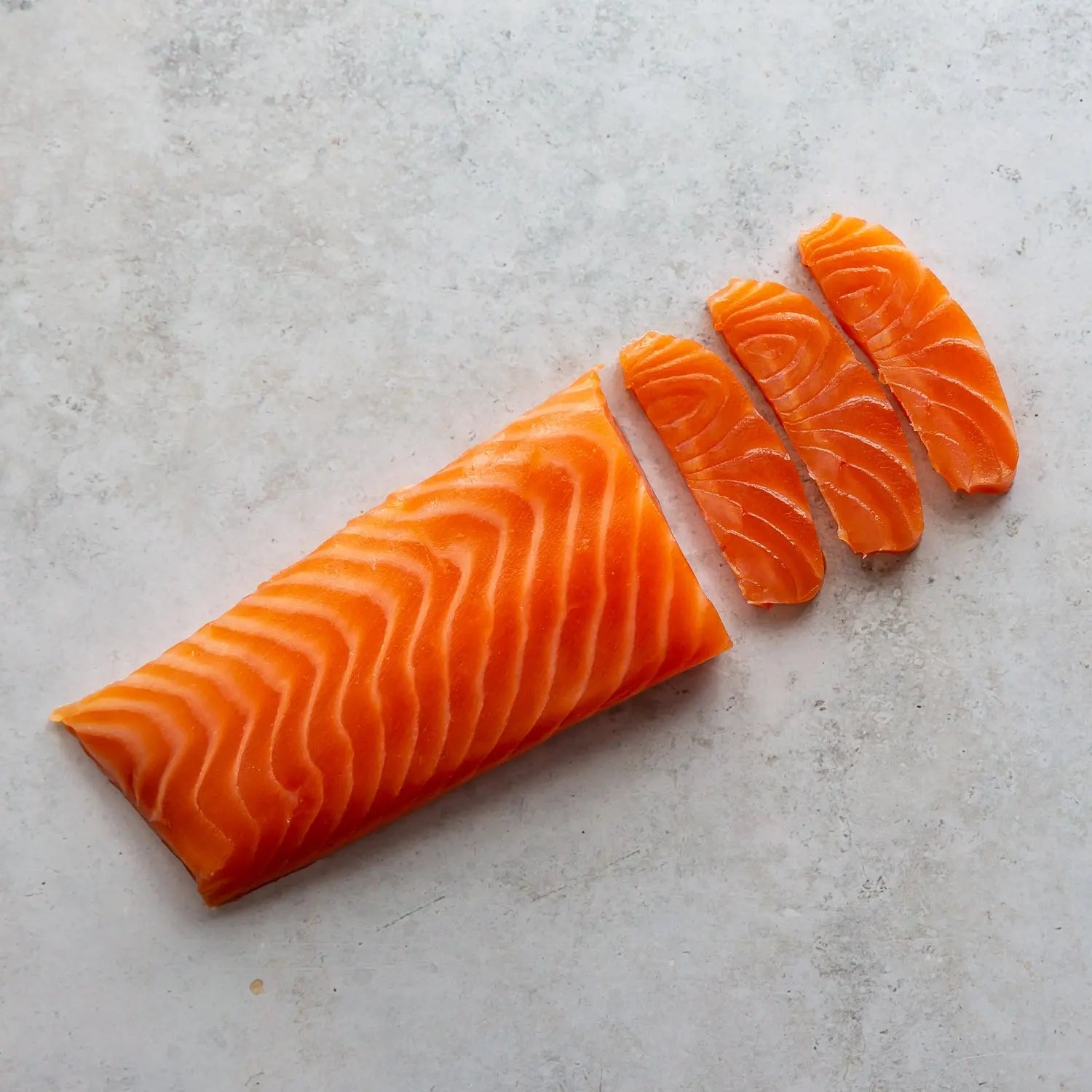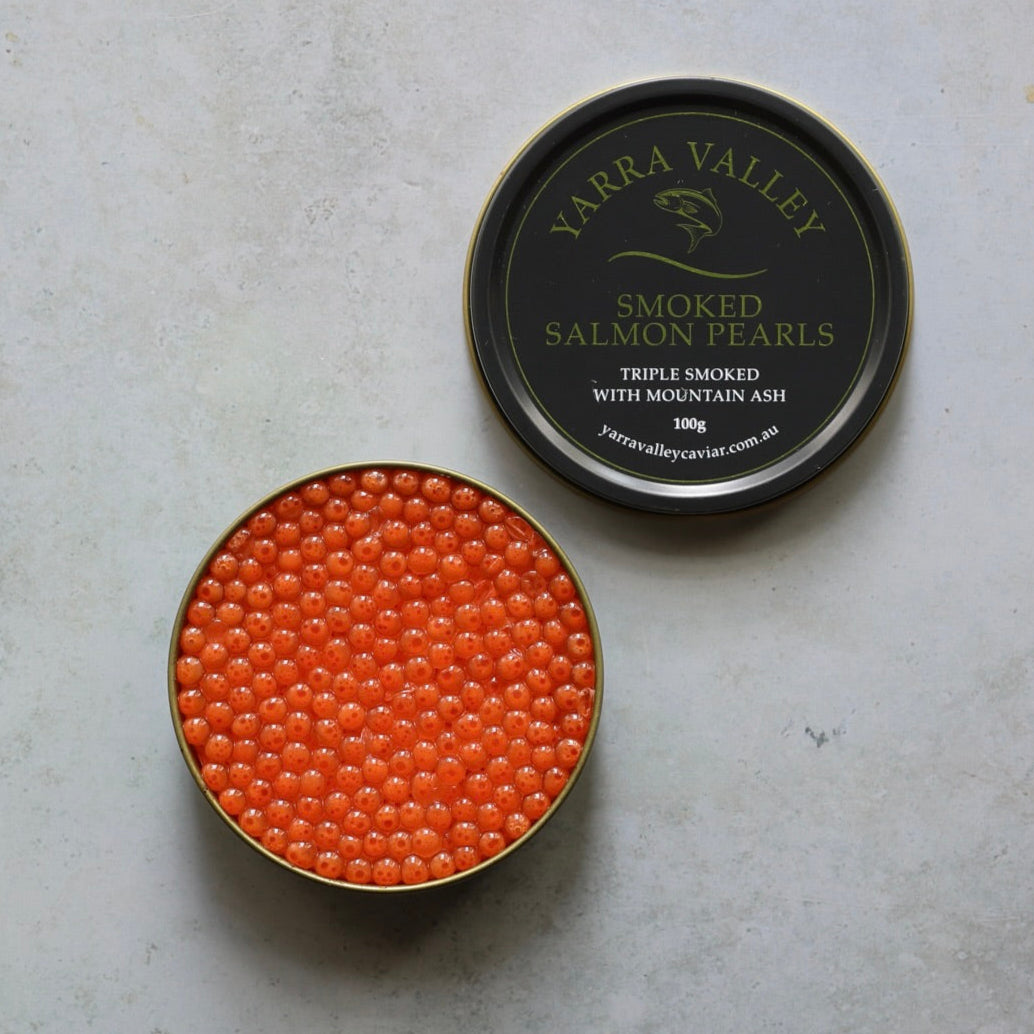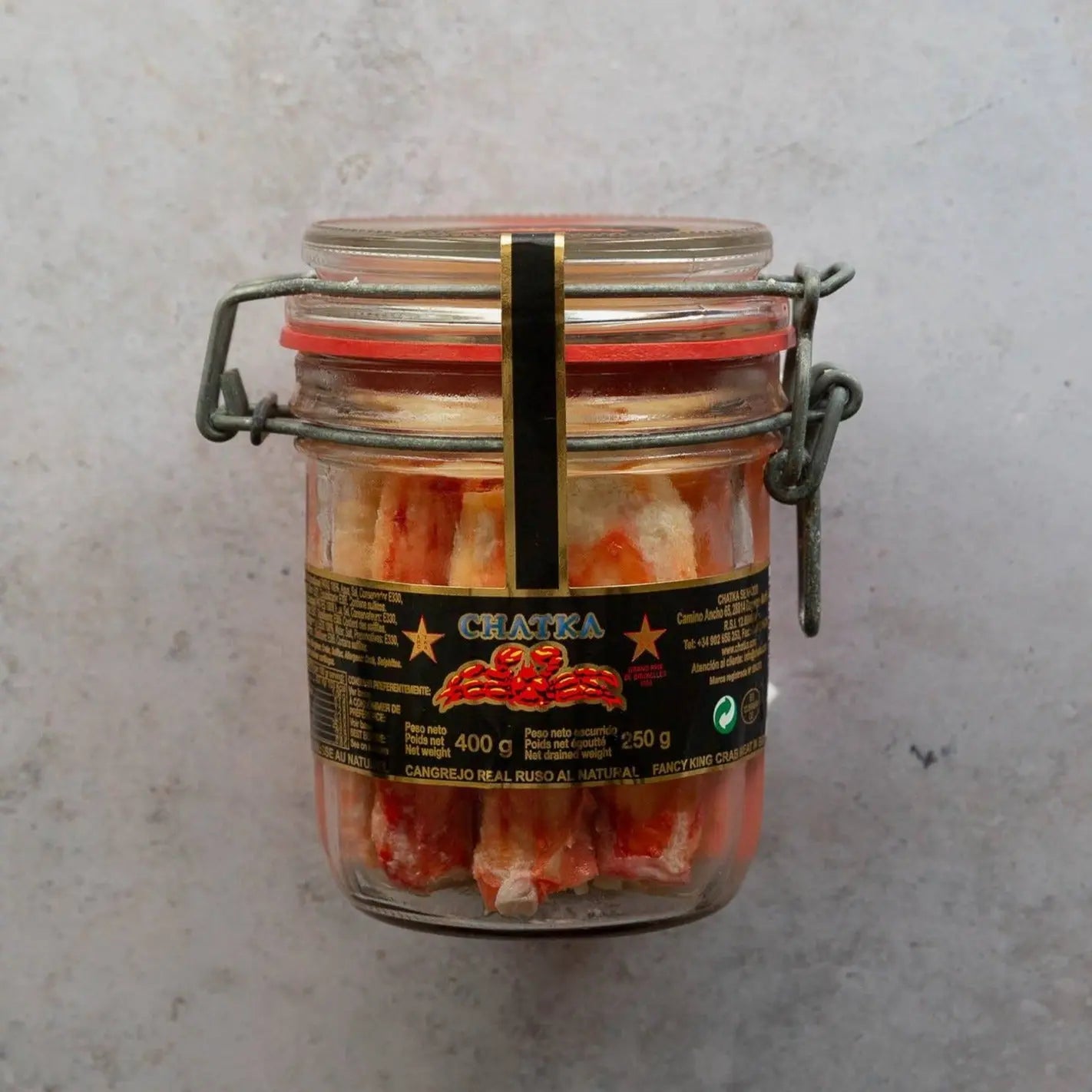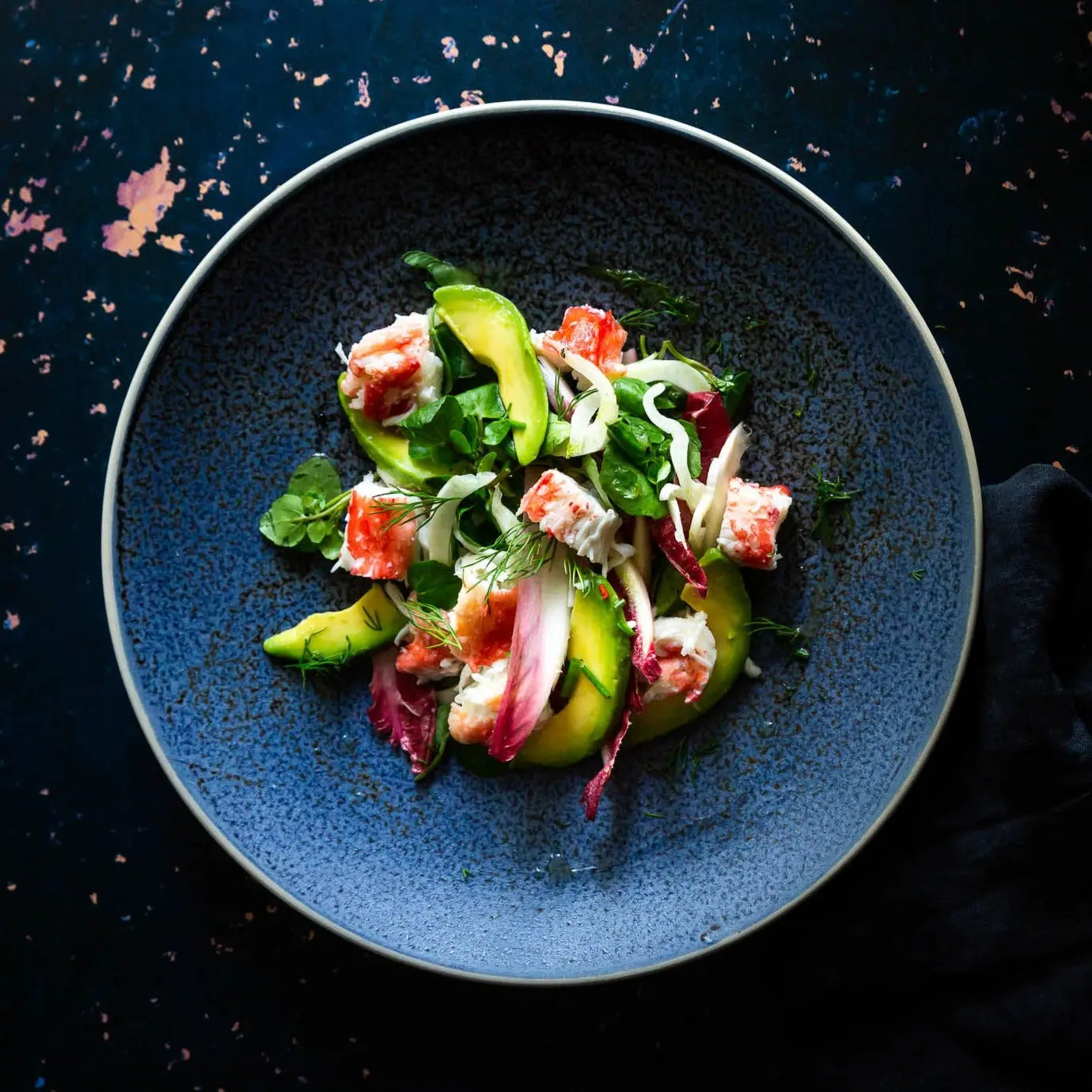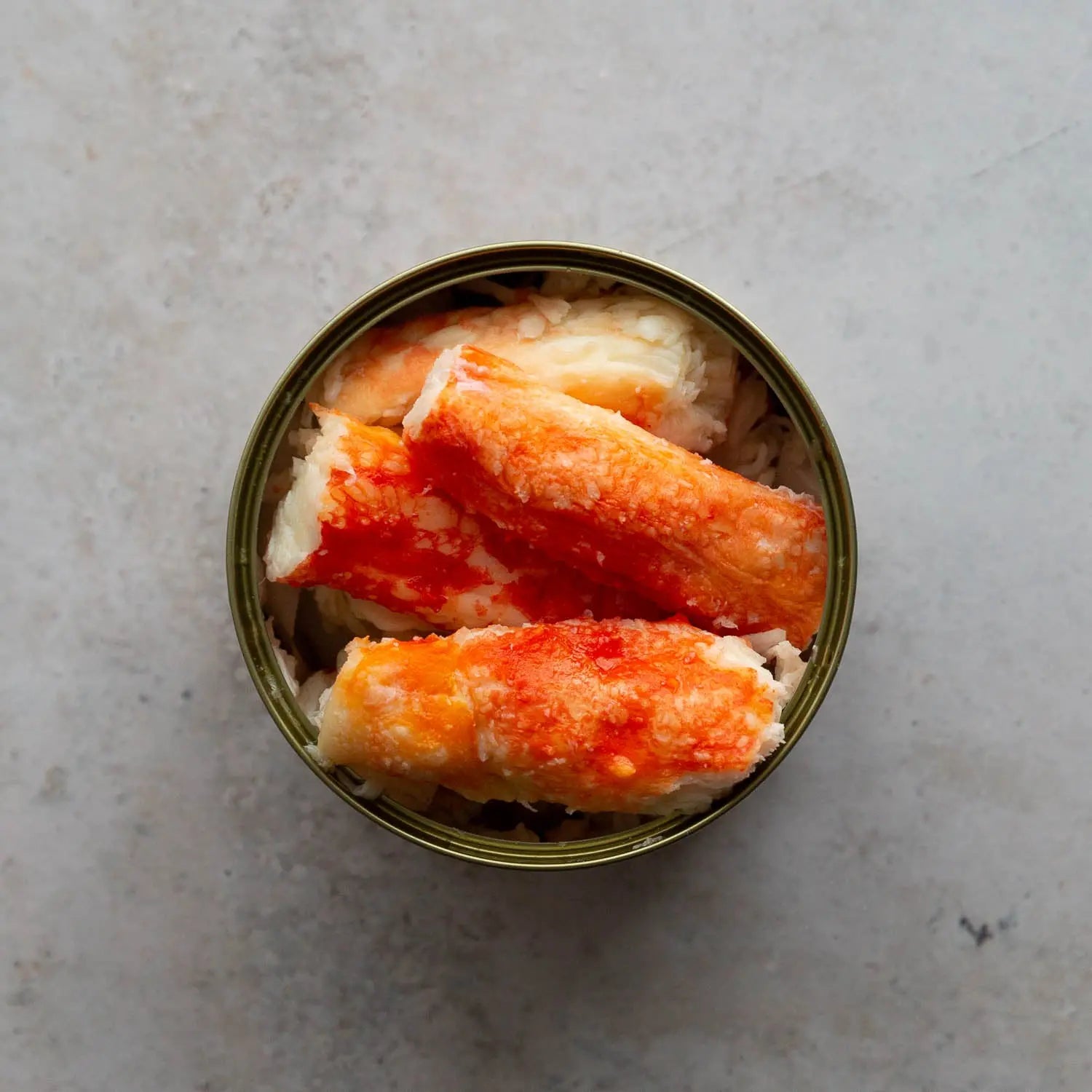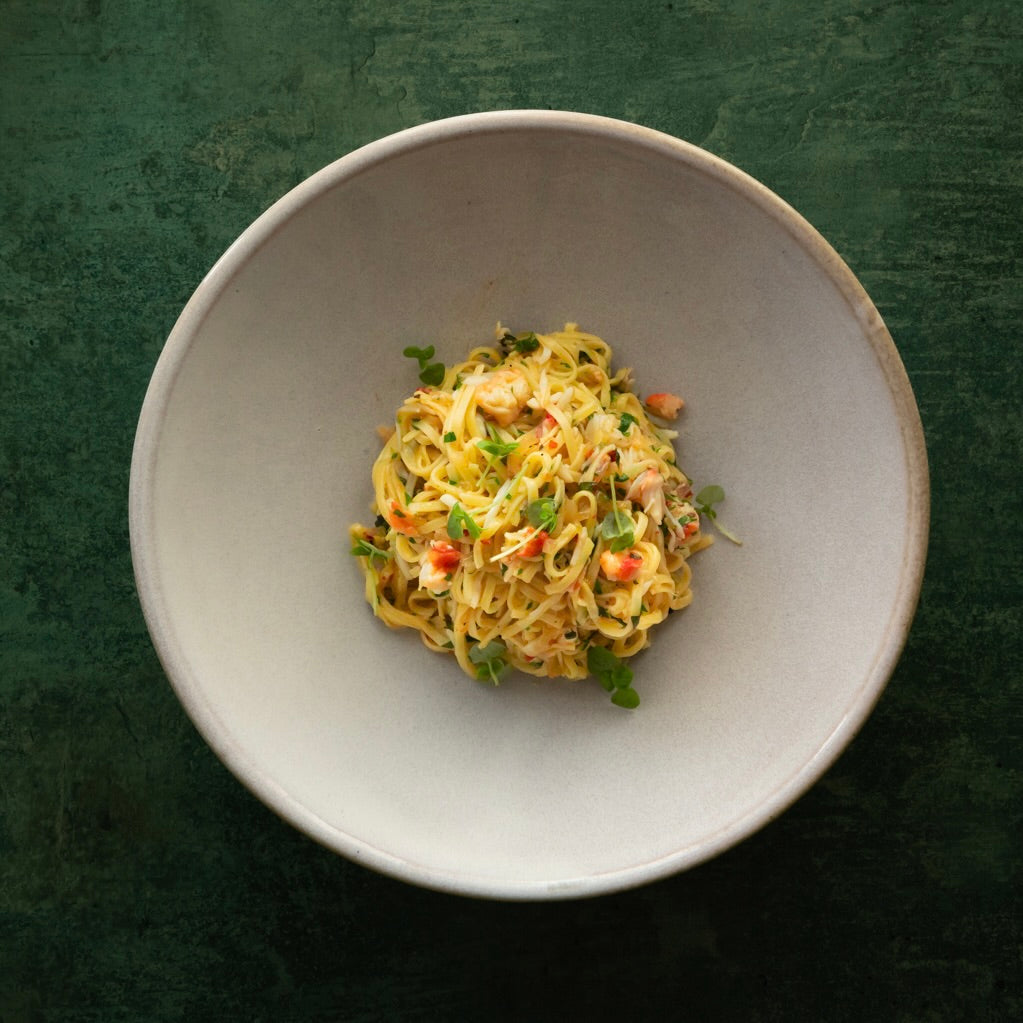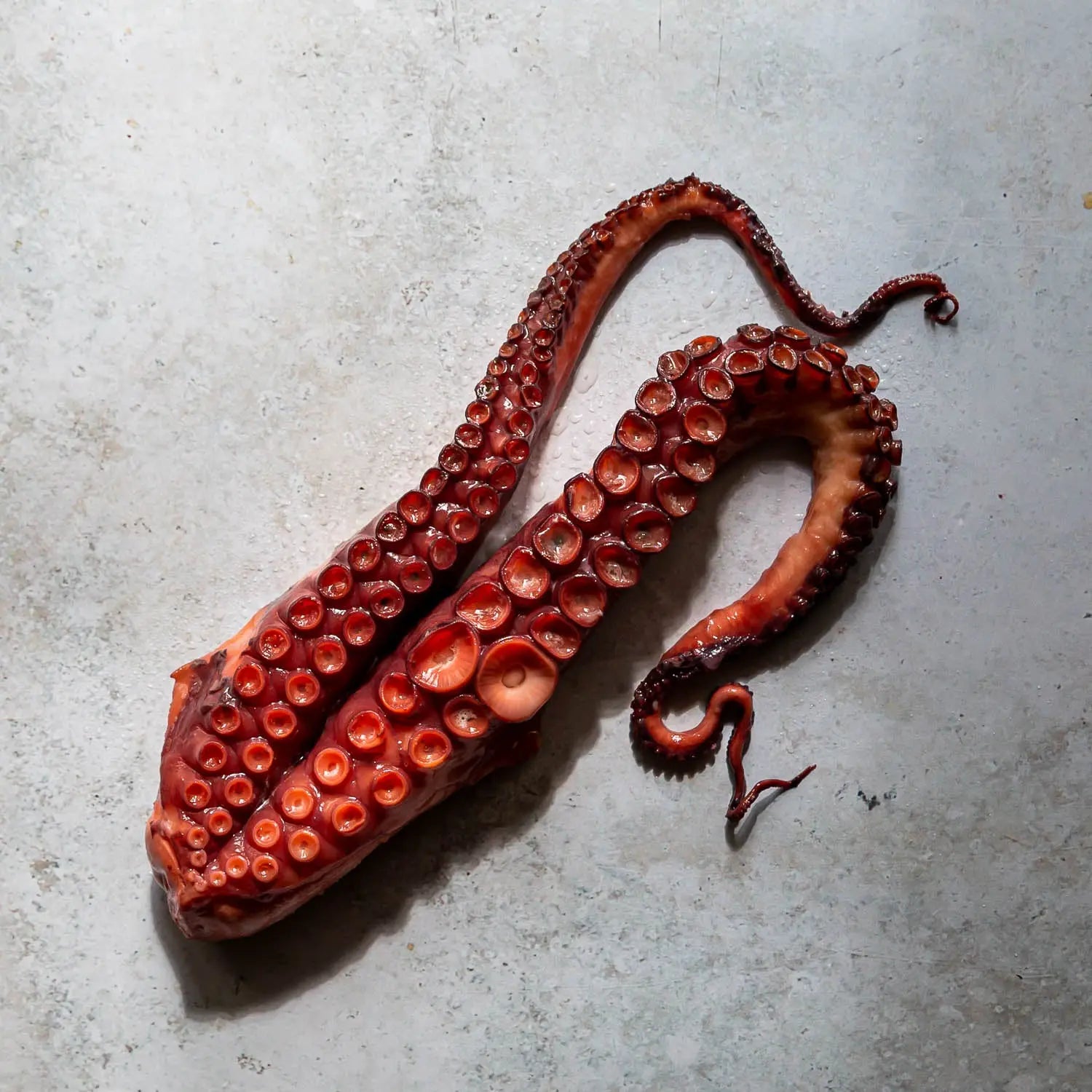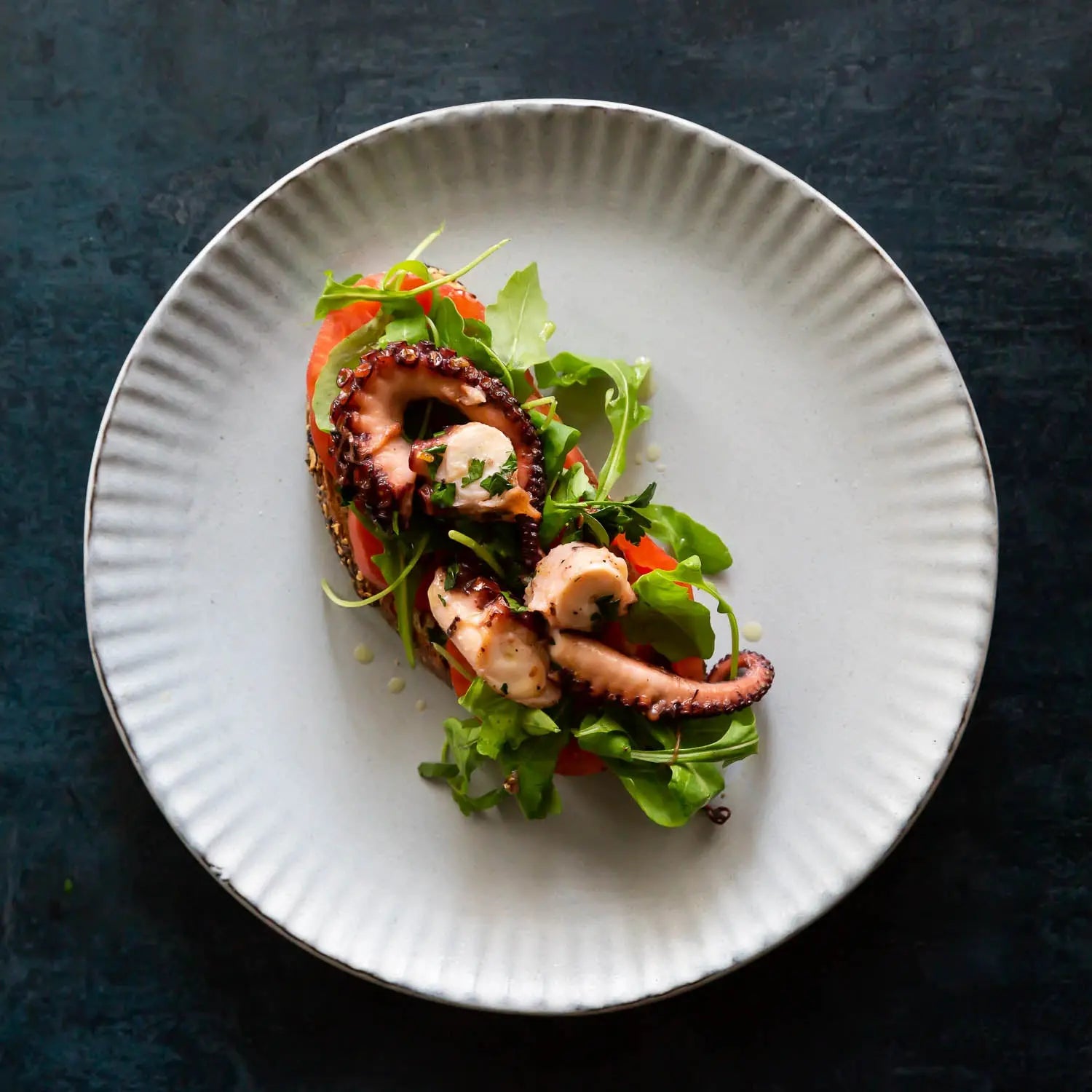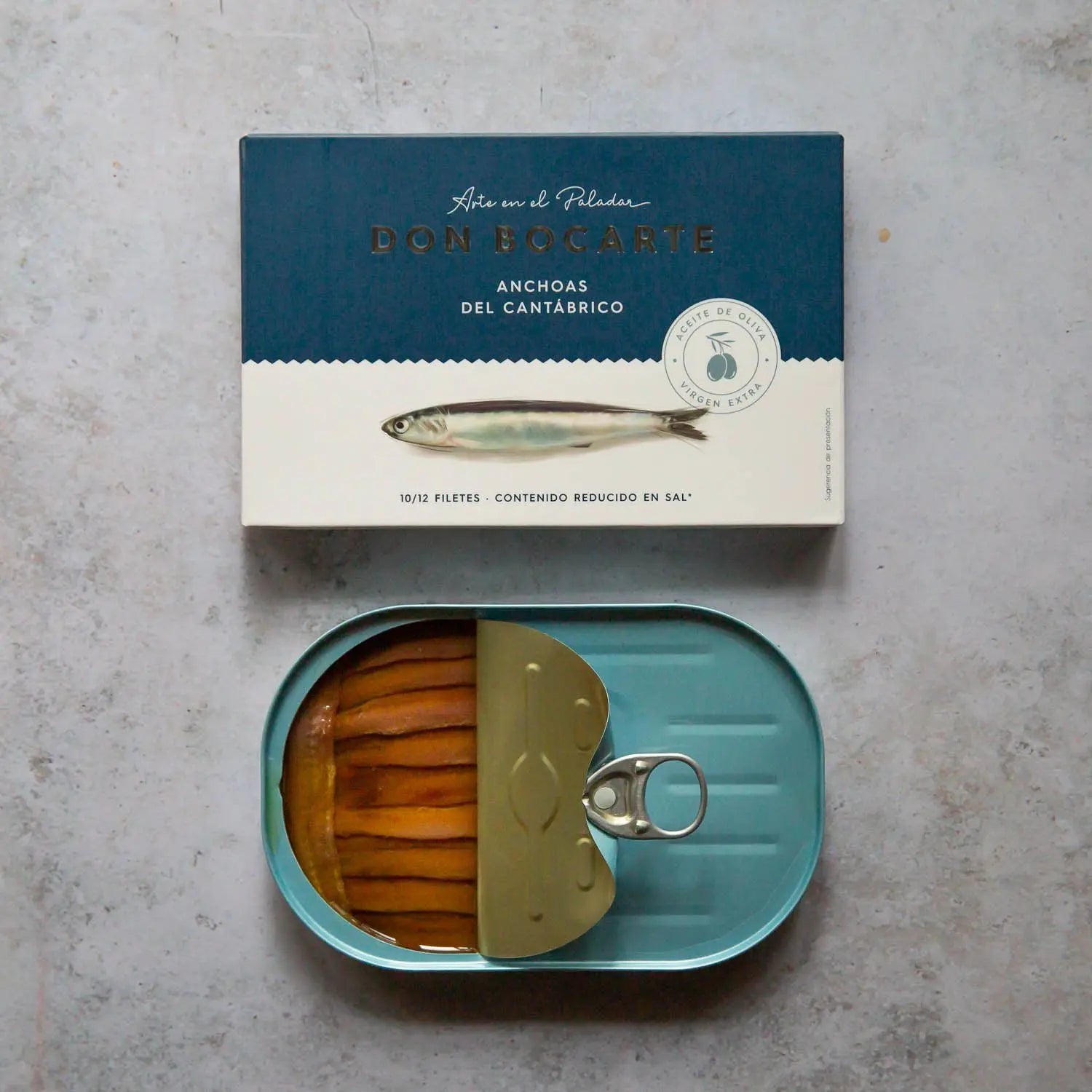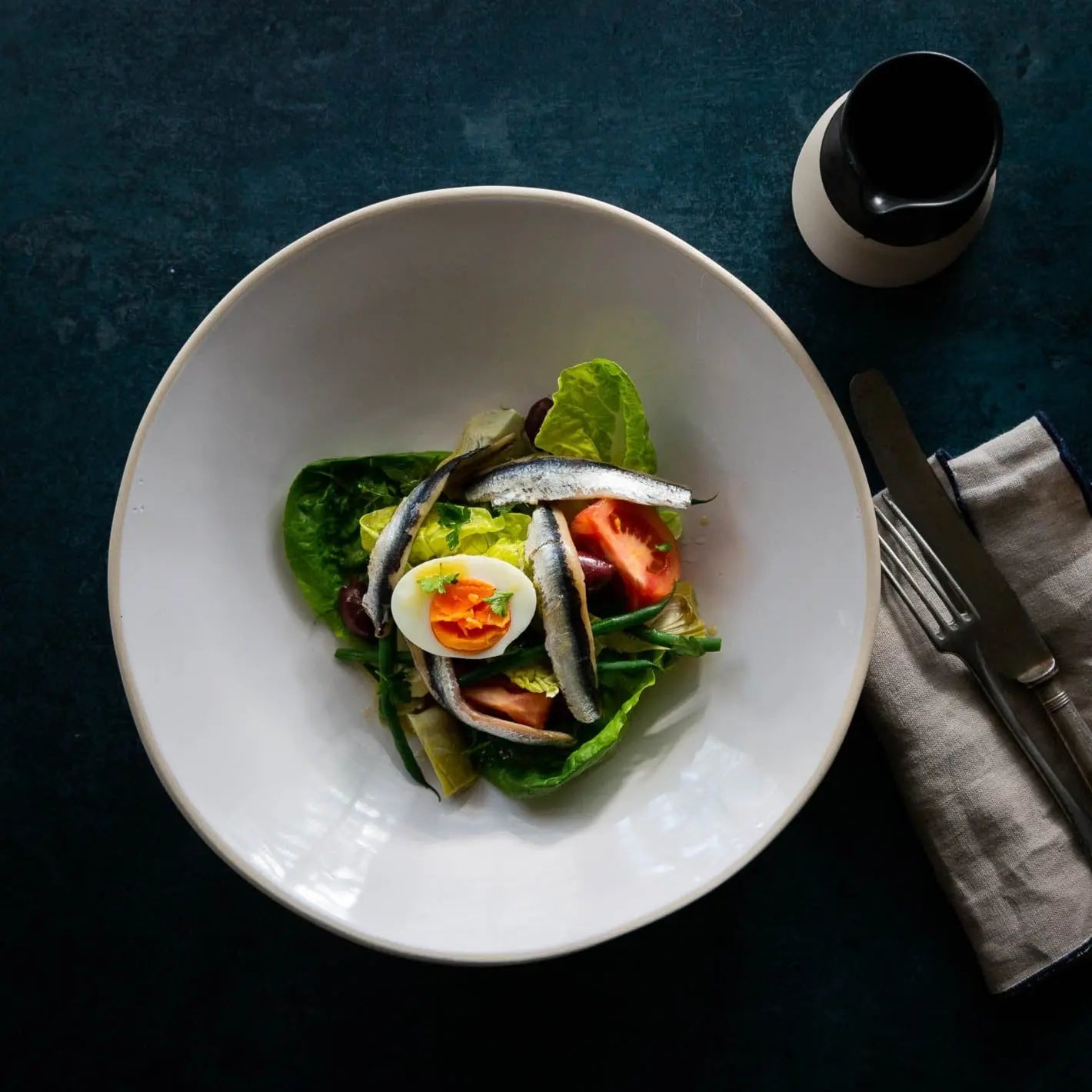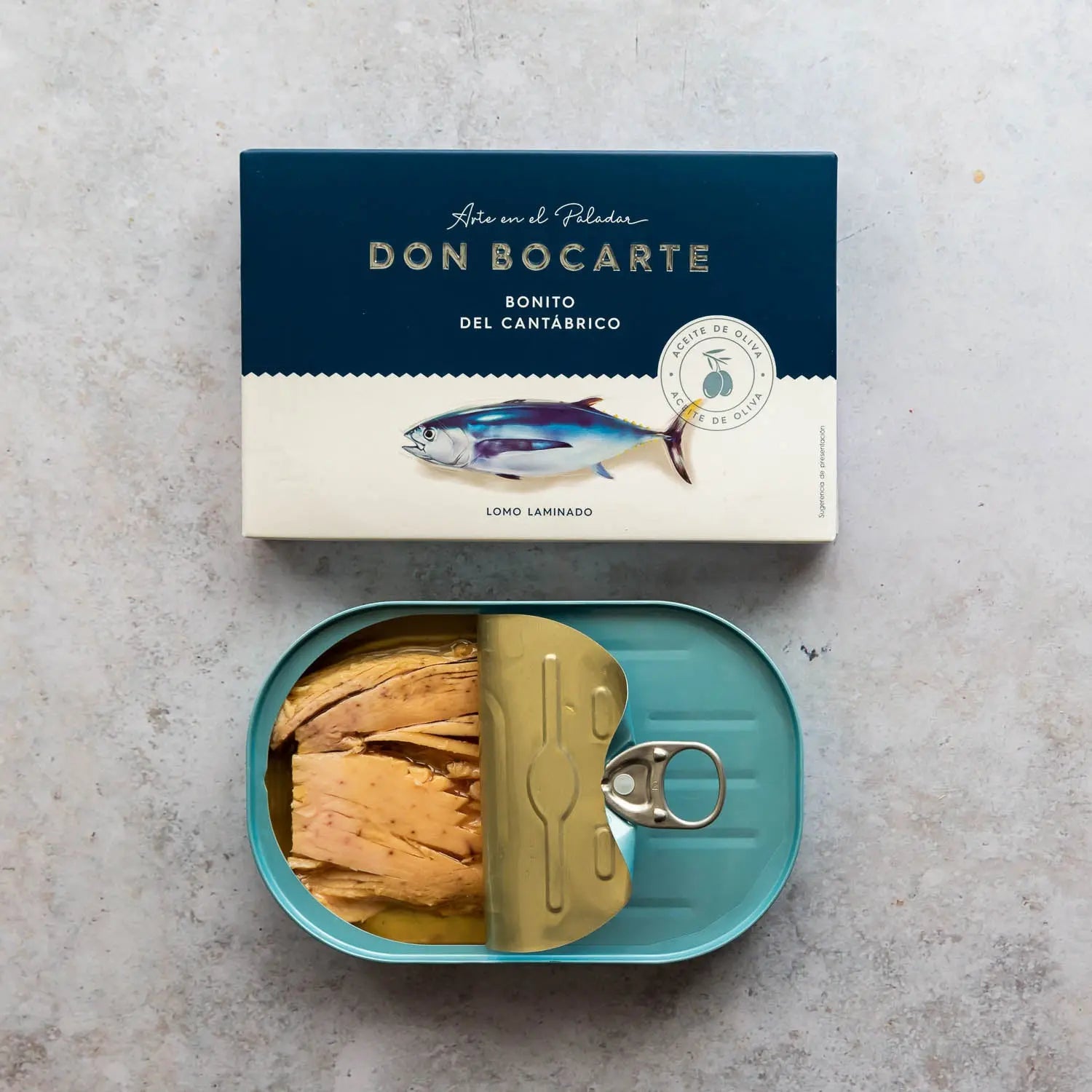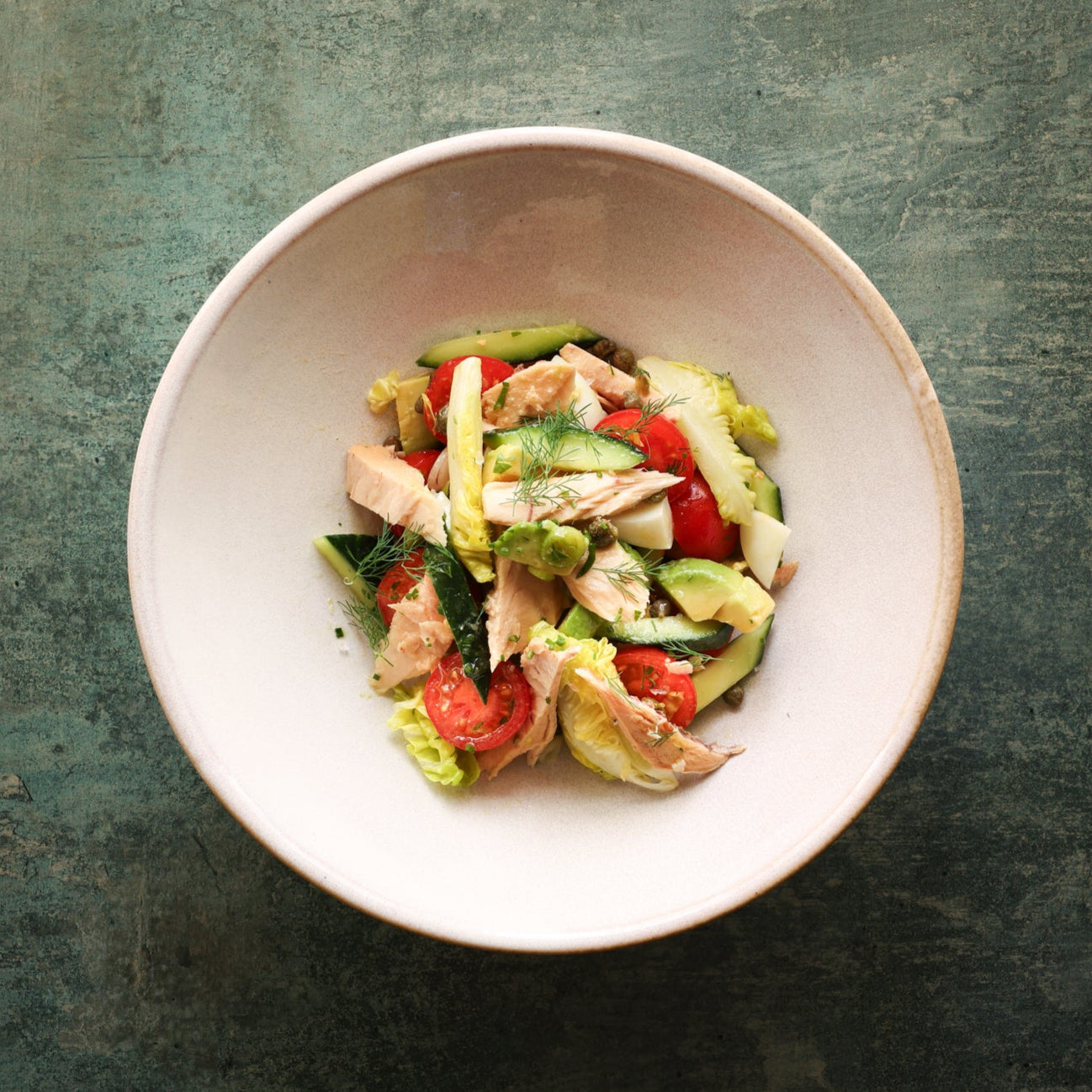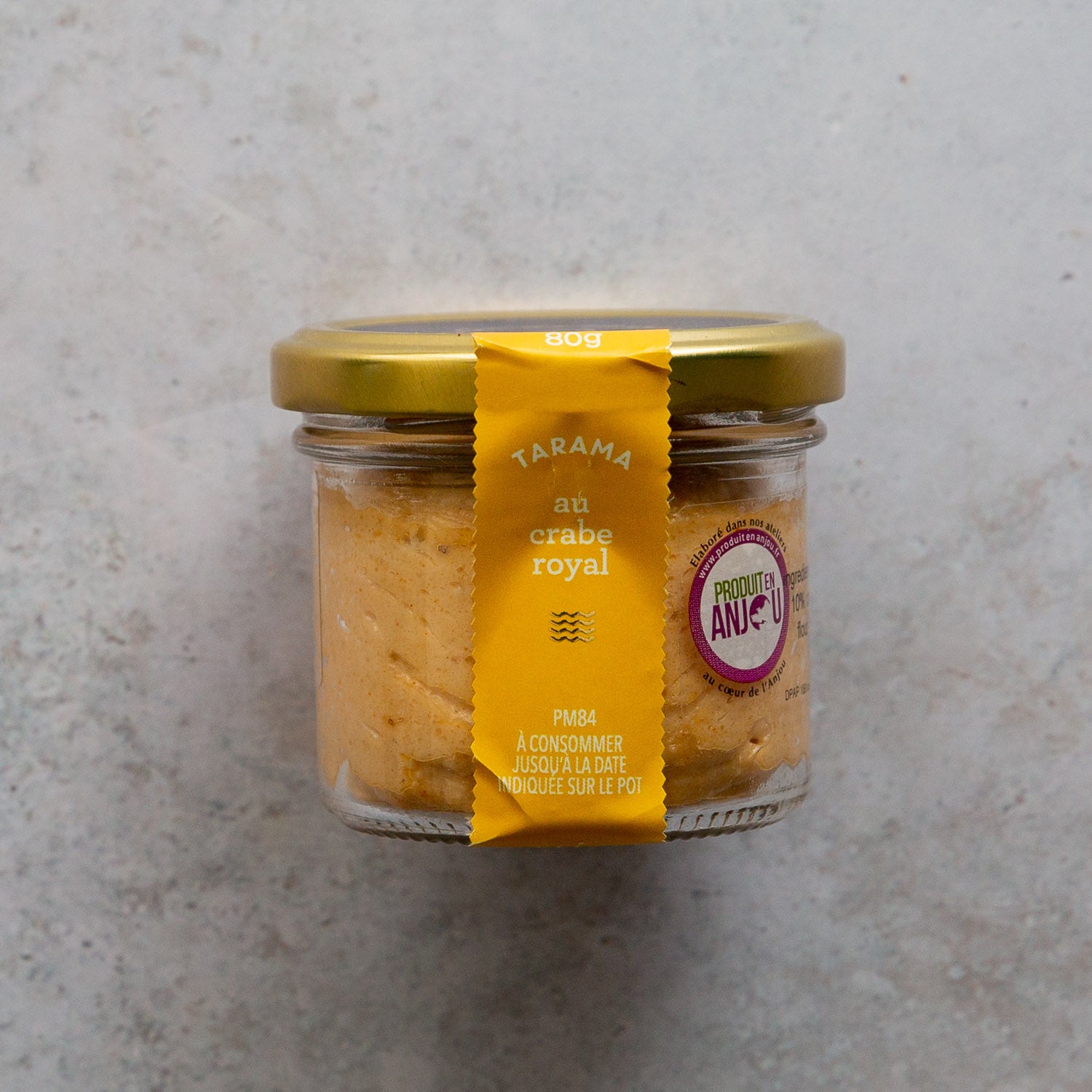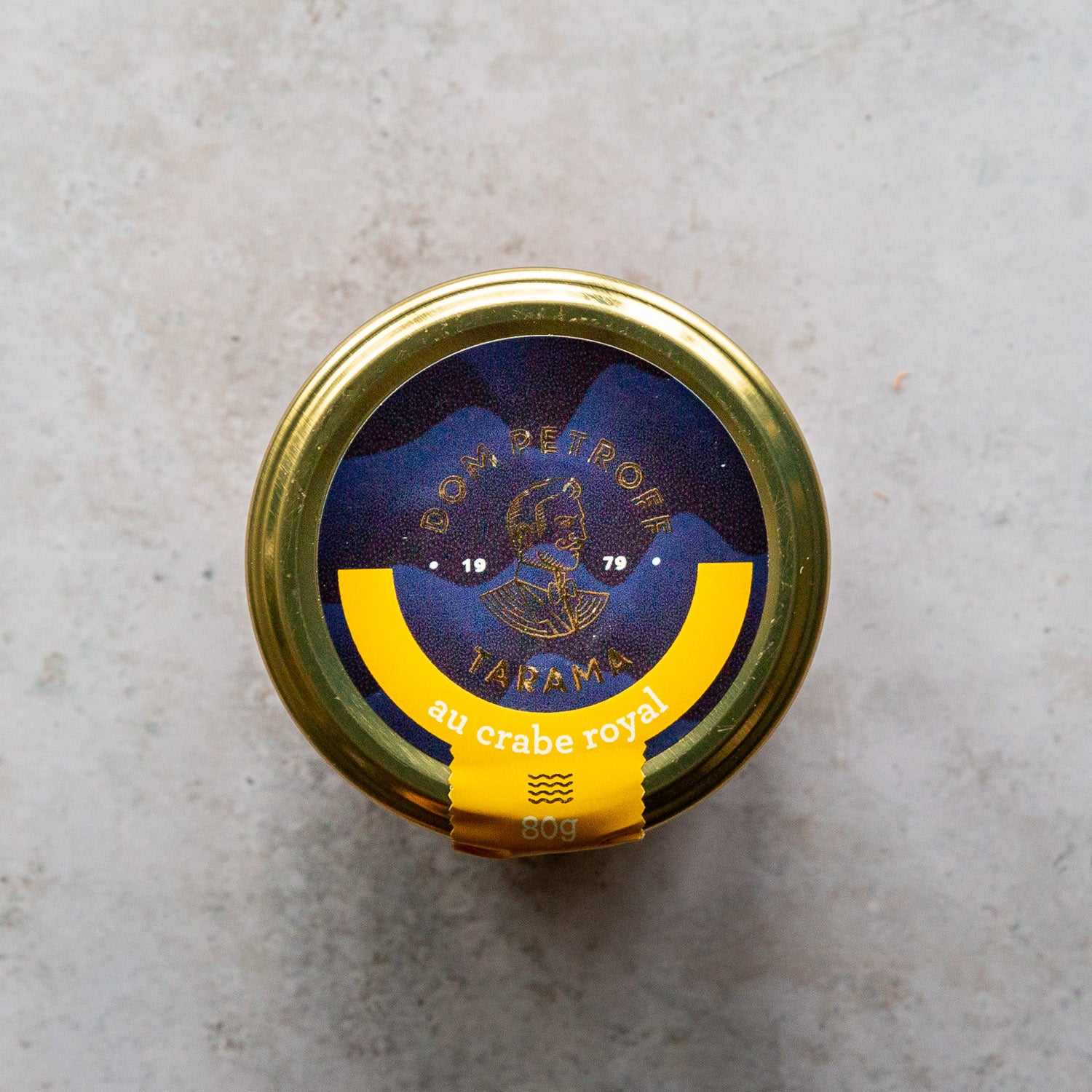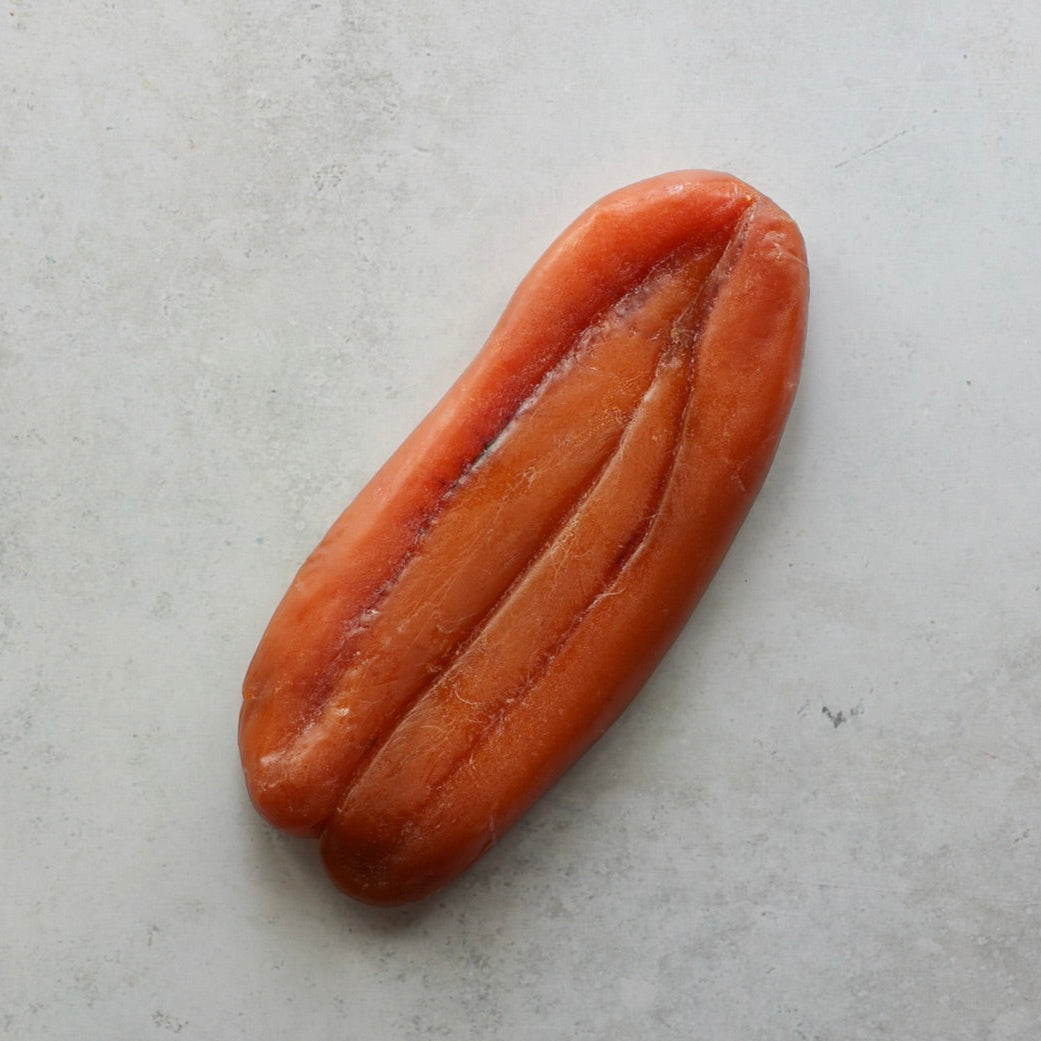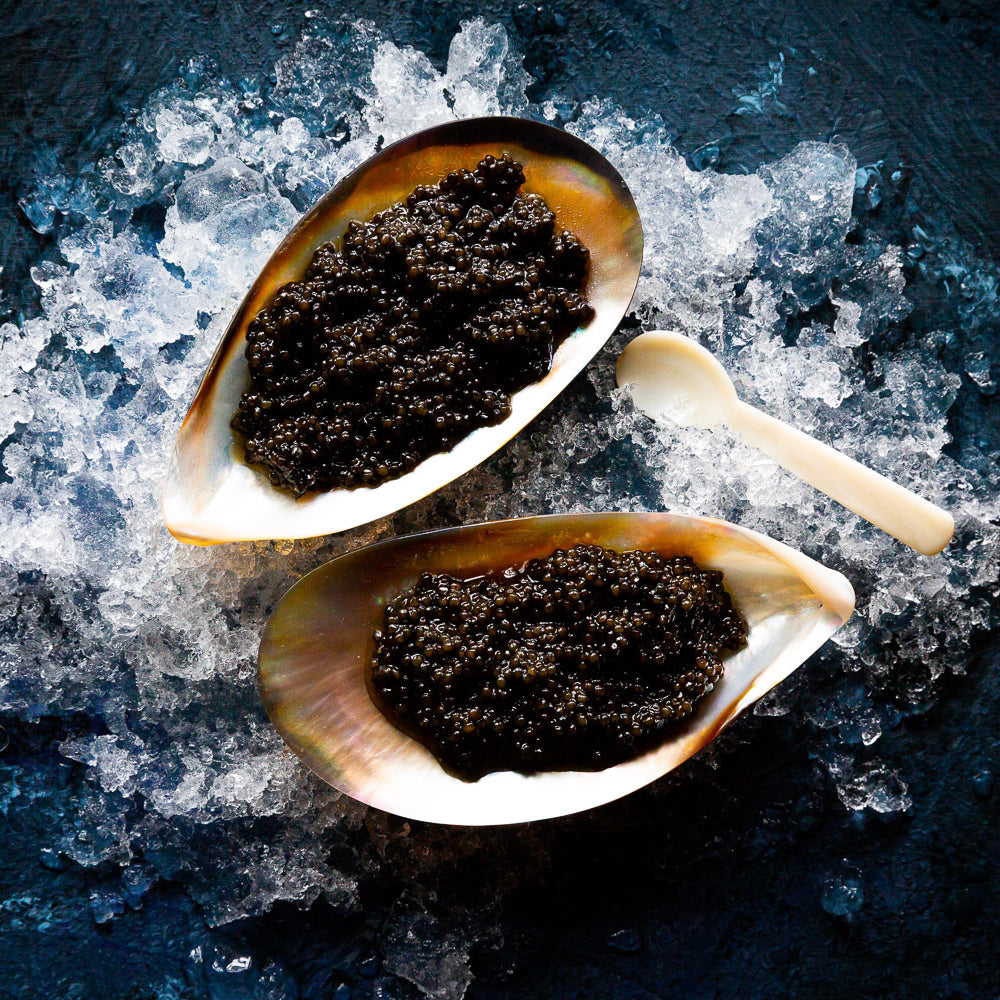
INSIDE THE WORLD OF STURIA CAVIAR
Sturia distinguishes itself from its competitors by adhering to a straightforward philosophy. They maintain the traditional caviar process and the product's luxury while innovating to ensure sustainability, traceability, and transparency.
In essence, Sturia believe that luxury only makes sense if it is ethical. The outcome of their approach is an exquisite product that is sustainable and fully traceable. Unlike 97% of other caviar brands, Sturia has complete control over the production process.
To understand why Sturia's caviar is considered preferable in the market, we have to examine the current caviar market. The caviar market comprises two types of stakeholders: traders who buy caviar from various producers throughout the world and producers who raise their own sturgeon and produce their own caviar. Sturia was one of the first companies in the world to start farming sturgeon to produce caviar and they continue to do so today. They have a strict CSR policy in place for conscious and reasoned breeding to ensure the sustainability of the species. All of Sturia's fish are born and raised in their fish farms in France, which guarantees an exclusive French origin for transparent and healthy caviar. They are committed to traceability and transparency in all their processes, which can be seen on the back of their tins. Their caviar is free from antibiotics, growth hormones, processed terrestrial animal proteins, and GMOs. To ensure sustainability, they make use of 100% of the fish.
WHAT IS CAVIAR?
The name caviar - whose entomology remains shrouded in mystery - refers simply to salted sturgeon (and only sturgeon) ‘eggs’. The word egg is not entirely appropriate since these priceless small grains inspiring dreams are neither ovulated nor fertilised when they are collected.
A HISTORY OF CAVIAR IN FRANCE
Sturgeon as we know it today has not changed since the Cretaceous period, i.e., for around the past 100 million years.
Legend has it that a Russian princess arrived one day in a small harbour of the Gironde estuary where Sturio sturgeon, also known as Créac, was caught. She was surprised to see that the sturgeon eggs were not being used, so she revealed to the fisherman the secret of the production and the real value of caviar. In 1920, the caviar of Aquitaine was born, and soon after, caviar became a regular feature on tables serving the finest French gourmet cuisine. France, known for its good taste, drove caviar to become the world's most highly sought-after delicacy and a world benchmark for luxury cuisine.
1986 - The first Siberan sturgeon (Acipenser baerii) entered the Sturia aquafarm in Colombiers. Farming sturgeon to produce caviar was both a pioneering and slightly crazy idea.
1996 - Sturia successfully produced their first caviar after many tests and with the help of their patience and perseverance.
1998 - All species of sturgeon were protected under the CITES treaty.
1999 - In tribute to the Sturio, the brand STURIA is created.
2008 - Wild sturgeon fishing is banned because of overfishing and poaching, which brought wild sturgeon to the brink of extinction.
2012 - Sturia offers 100% french caviar for the first time.
2013 - To defend the values and commitment of Aquitaine caviar producers - who make caviar from fish born, farmed and slaughtered in France - the collective trademark 'Caviar d'Aquitaine' was registered at Sturia's initiative. In collaboration with three other Aquitaine producers, they established a working group to create a 'Caviar d'Aquitine' IGP.
2020 - An exceptional year for French caviar d'Aquitine, which celebrated its 100th anniversary. It also saw the first production of Sturia's 100% French Beluga caviar in their fish farms.
STURIA'S PROCESS
Unlike 97% of other caviar brands Sturia have full control over the production process. They are the, breeder, producer, selector and refiner.
- Breeder - They own their own hatchery (where their fry - which grow into young sturgeon are born) and five Aquafarms. These facilities are unique in France.
- Producer - They also have their own production unit. They have complete control of their fish farming and caviar production from start to finish. This ensures total traceability ‘from egg to egg’.
- Selector - They select their caviar grain by grain according to very precise criteria for size, colour, firmness and organoleptic qualities. This is a long but essential process to create Sturia’s selections and guarantee their quality.
- Refiner - After production, caviar is packed into 1kg original tins in their maturing rooms. Premier caviar spends a few weeks here, whereas the Vintage and Origin selections stay several months.
Unbelievable patience and exacting standards are required to produce caviar. It takes around ten years for a sturgeon to produce caviar.
- Reproduction - In fish farms, reproduction is induced. Sturia staff first collect milt from male sturgeon and then oocytes from females. After many processes, fertilised eggs are incubated until they hatch, when sac fry are born that grow into fry.
- Sexing - After three years, it is finally possible to determine a sturgeons sex. This is done by ultrasound scanning of each fish. Sturia were the first to develop this innovative method.
- Farming - Females are farmed in ponds until they are mature ie from about seven years for Baerii, up to nine years for Oscietra sturgeon and fifteen years for the Beluga.
- Fishing - Using further ultrasound scans and a biopsy enabling them to taste the eggs and check their quality, Sturia establish the ideal time to fish.
- Harvest - The gonads are carefully removed. A mature female weighs around 10 kg and produces 10% of her weight in caviar.
- Assembling - Sturia rigorously select their caviar according to colour, size and firmness.
- Sieving - Once a caviar batch is created, roe are gently sieved, rinsed and weighed to determine the amount of salt to bring.
- Salting - The caviar grains are lightly salted according to the Malossol tradition (literally meaning 'slightly salted').
- Refining - The caviar is vacuum-packed into original tins and starts to mature, which gives caviar all its subtle aromatic qualities. Since Sturia are experts at maturing caviar, they are able offer a wide range of flavours and texture.
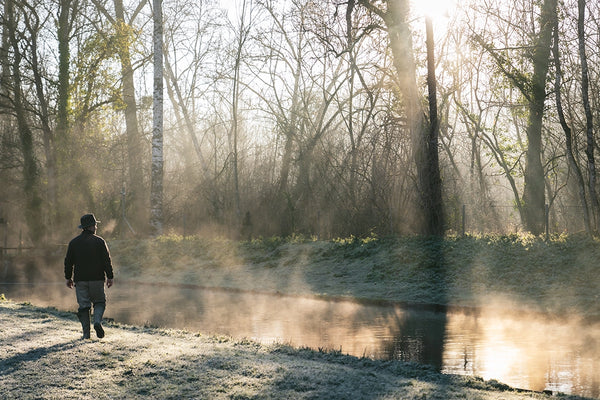
RESPECTING THE ANIMAL AND SUSTAINABILITY
Sturia is a company that strongly believes in sustainable development. They have been committed to it long before it became a popular concept.
Their story started with their involvement in the repopulation of the Gironde estuary with the endemic Sturio species. Today, farming represents the best alternative to wild sturgeon fishing, and therefore the best way to protect this amazing animal from extinction.
Sturia prioritises the well-being of their sturgeon, and promoting their healthy environment is a necessity. They believe in respecting the environmental balance, with particular attention paid to water quality and the well-being of fish. They constantly monitor their farming conditions using real-time monitoring software to maintain optimal conditions and minimise their impact on the natural environment.
They have taken preventive steps, such as vaccinating their fish, to eliminate the use of antibiotics. To ensure the well-being of their sturgeon, Sturia adapts their environment as closely as possible to their natural lifestyle. They also make the best use of fish in different sectors, such as food, leather goods, cosmetics, nutraceuticals, and artisanal products, with the aim of optimising the use of by-products.
Sturia's products are the result of French passion and know-how in sturgeon farming and caviar production. They are committed to passing on their knowledge to the next generation to ensure the sustainability of these professions.
STURIA'S FISH
Three sturgeon species grow in Sturia's ponds: Acipenser Baerii (Siberian caviar) and Acipenser Gueldenstaedtii (Oscierta caviar) and Huso Huso (Beluga). These three different species each produce caviar with their own specific features.
Acipenser BAERII
Also known as Siberian sturgeon, this is the smallest of their species (farmed Siberian sturgeon grows to 120 cm on average and weighs 8 kg). It is light grey to dark brown in colour, with smooth skin and a long slender rostrum (sturgeons snout). This sturgeon produces dark brown caviar with a grain size of at least 2.5 mm.
Acipenser Gueldenstaedtii OSCIETRA:
This fish is recognisable in the Sturia ponds by the fact that it is bigger than its Siberian cousin and has a rough skin. This impressive fish is also darker, with a colour ranging from beautiful charcoal grey to black mottled with yellow. Its eggs are light in colour and bigger (at least 2.7 mm) than baerii eggs.
Huso Huso BELUGA
This is one of the most prestigious and sought-after selections in the world. Silver grey in colour, its skin is smooth and its rostrum conical. Its large eggs (3 to 4 mm) with grey reflections, its chew and its delicate flavours make it an exceptional caviar. Today, the average breeding period for this sturgeon is between 15 and 20 years.
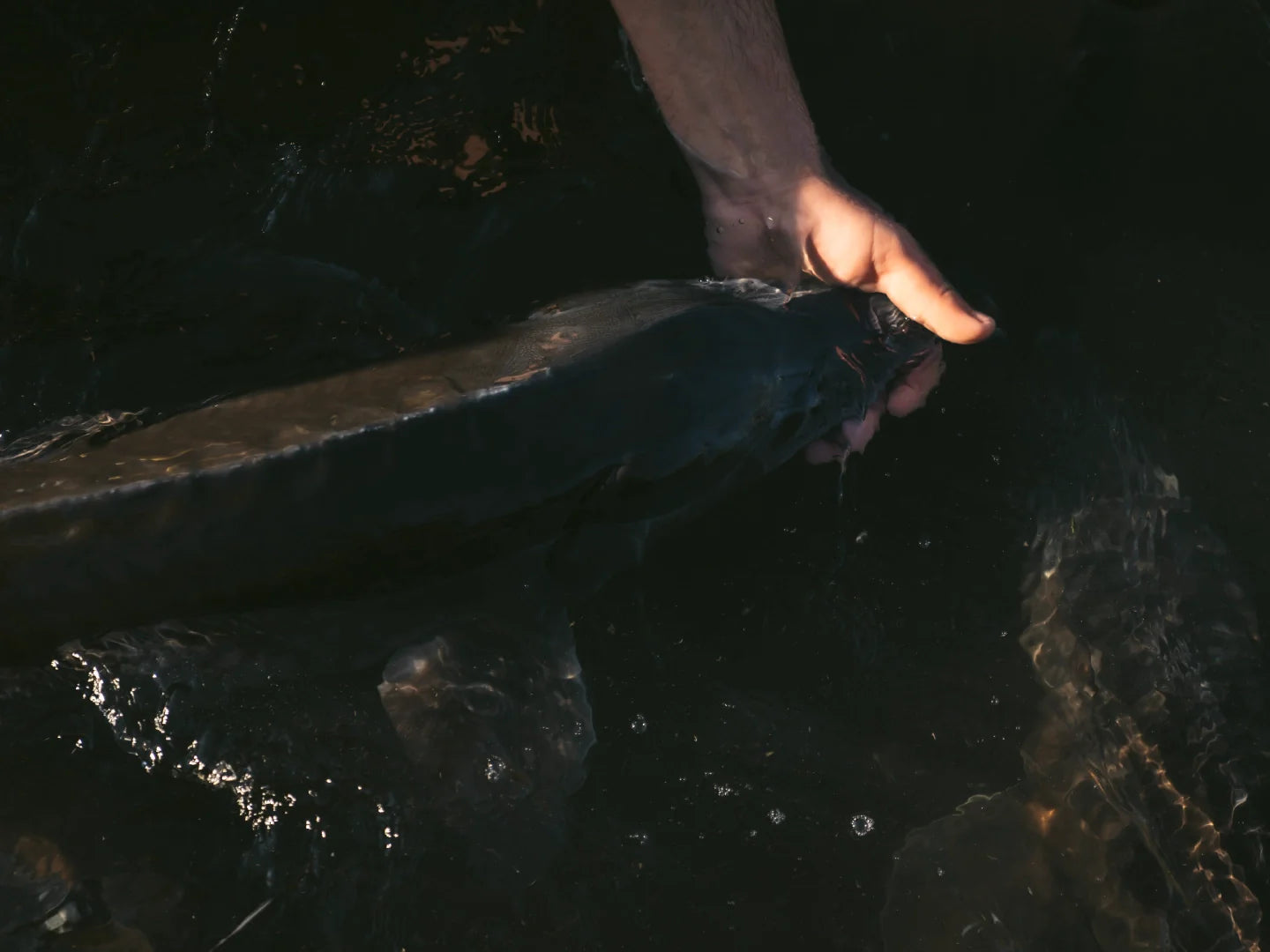
WHAT INFLUENCES THE TASTE OF CAVIAR?
Water quality and the purity of pollution-free water play a crucial role in determining the taste and quality of caviar. That's why Sturia pays close attention to this important aspect of farming caviar. Similarly, the soils and environment of fish farms can significantly influence the taste of caviar, making it another area where Sturia excels in refining. Most importantly, they ensure that their sturgeons are not fed antibiotics, growth hormones, GMOs, or any other harmful substances, as this greatly affects the taste of the caviar.
TASTING NOTES & SERVING
Sturia Oscietra
Notes of butter, nuts and avocado - creamy
Vintage Baerii
3-8 months aged- notes of oyster, fresh grass and black olive
Beluga
Notes of butter, notes of almond, notes of lime
The traditional way to enjoy caviar is to sprinkle these glistening pearls on blinis with a dollop of crème fraîche. Caviar is delicious on its own, but it also works well with other foods as long as they don’t have overpowering flavours. Potatoes make a perfect neutral vehicle for delivering caviar, and crisps are now often used as an accompaniment. When it comes to seafood, caviar works well with scallops, and we also recommend smoked salmon canapes or a Tuna Tartare topped with caviar (see our recipe here). For those who enjoy eggs, hard-boiled eggs are often recommended, with the white and yolk separated and chopped up and served with the caviar. For Oscietra, we like scrambled eggs.
In the tradition of having caviar alone in a caviar tasting, it's customary to have a second spoonful. The first spoonful allows the palate to acclimate, while the second is where one truly savours this exquisite delicacy's scent, flavour, and texture.
Proper storage is crucial when handling caviar. Your caviar tins should be stored in the coldest section of your refrigerator, typically the bottom shelf. When you're ready to indulge, allow the tin to sit at room temperature for 5 minutes before opening it. Once opened, it's best to enjoy the caviar within 2-3 days.
Using a metal spoon to serve caviar is not recommended, as it can alter the taste of the caviar at a chemical level. A mother-of-pearl spoon is an excellent alternative often preferred by caviar enthusiasts.


